Porridge is an important and necessary baby food product. More and more pediatricians are inclined to ensure that complementary foods begin with porridge. Useful in its effect on the digestive system and rich in trace elements, this product must necessarily be at the heart of the baby menu. Porridge for the first feeding can be prepared independently or purchased in packages. With the introduction of such complementary foods, parents should know in what period you can start giving your baby porridge and how to do it without problems.
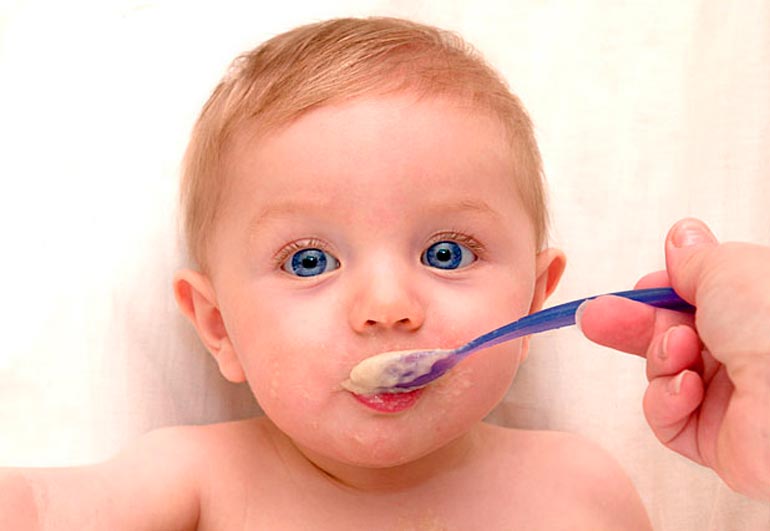
From what age to give
You can include cereals in baby food from 6 months of age. Artificial feeding babies can begin to get complementary foods at 5 months.
Experts argue that the time of introducing cereals into the child’s diet depends on the individual pace of its development, physical condition, and the absence of allergic reactions. If the child is not gaining weight well, then you need to start with cereals, if he presses weight well, then with vegetable puree (links to the rules below).
Before indulging your baby with cereals, parents should consult with a local pediatrician. The doctor will advise with which porridge it is better to start, in what volume to offer, what to pay attention to.
Rules for the introduction of cereals
So that complementary foods do not turn into troubles from the digestive system, it is important to follow the basic rules:
- For the first feeding, it is worth giving preference dairy-free one-component cerealswithout gluten, sugar, GMO, fructose and other artificial additives;
- Most babies tolerate rice and buckwheat. After the baby learns them, you can expand his menu with corn and wheat porridge;
- It is recommended to start complementary foods with the “packaging” options available at pharmacies and children's supermarkets. Why? There are a number of explanations for this: their composition is balanced; They are calculated for a specific age; they are hypoallergenic; they are quick and convenient to cook, having previously read the instructions and recommendations;
- With good assimilation of milk-free cereals and the absence of allergies, gluten-free milk can be introduced after 4-7 weeks, the nutritional value of which is much higher.
How to give
Baby cereals offered to the child for the first time should be 5 percent (5 g cereals per 100 ml of water). This condition is necessary so that the porridge consistency for the first feeding is optimal.
Giving porridge with a teaspoon. It is advisable to use rubberized spoons, which are specially designed for the baby’s tender gums. The best time for feeding is breakfast.
It happens that a child refuses to eat complementary foods from a spoon, can refuse cereals, so we wrote an article for you how to deal with it.
Here, we wrote how to teach a child to eat from a spoon - read.
[sc: rsa]
The introduction of complementary foods usually begins with 0.5-1 tsp. rice or buckwheat porridge. By consistency, the gruel should resemble mashed potatoes. It is important to ensure that there are no lumps in the product offered to the child. After complementary feeding, the baby is invited to breast or milk formula.
Every day, increase the amount of porridge offered to the child by 1 teaspoon. On the second day of feeding, the child should be offered 2 tsp., On the third day - 3 tsp. etc., until a single serving is 150 g. A single dose in 7-8 months should be 160-170 g, in 8-9 months - about 170-180 g. Closer to a year, a single serving should be 200 g. Do not forget that each child is individual and takes certain foods differently. This also applies to the volume that the baby can master in one go.
Within 7-10 days, the consumed volume is gradually brought to 100-150 g. For 2 weeks, it is recommended to give the child one type of porridge. Over time, the consistency should already be 10% (10 g of cereal per 100 ml of water). Only with good tolerance and the absence of allergic reactions and other troubles, it is possible to start the introduction of the following type.
Varieties of baby cereals
The most suitable option for the first feeding is dairy-free cereal. They do not contain sugar, milk, starch, gluten and other additives. The composition of milkless cereals is ideally adapted to the digestive system of the child, which has not yet been strengthened for digesting solid food.
Buckwheat. Due to the content of protein, iron, magnesium, vitamins B1 and B2, buckwheat is considered a valuable cereal and should be an obligatory product in the child’s diet.
(Cooking buckwheat porridge)
Rice porrige. A product rich in healthy dietary fiber. Many parents mistakenly think that eating rice can cause constipation in children. However, it is not. Rice flour, which is used to make baby food, does not contain crushed rice and does not provoke constipation.
(Cooking rice porridge)
Corn porridge. By the amount of nutrients it surpasses even rice. It is rich in protein, iron and fiber.
Oatmeal. It is considered useful due to vegetable protein and minerals (calcium, iron, magnesium, vitamins B1, B2, PP). The amount of fat and fiber contained in oatmeal is 6 times higher than their content in other cereals.
(Cooking oatmeal porridge)
For each species, it is advisable to adhere to the established regimen of administration - 2 weeks. Only after this, with normal assimilation, can we start the introduction of another cereal.
Most modern mothers use complementary packaging for complementary foods.
- Firstly, It is fast, simple and convenient.
- Secondly, baby food manufacturers supply proven, high-quality and balanced products that are fully adapted to the baby's body.
- Thirdly, you can choose hypoallergenic, gluten-free and dairy-free cereals, which significantly reduce the risk of allergies in the baby.
However, some mothers prefer to cook porridge for their child on their own.
Cooking yourself
When deciding to cook cereals at home, it is important to know how to cook them. The following tips will help:
- Porridge for baby food is cooked only on water!
- Before cooking, grits are crushed using a blender or coffee grinder.
- Cereals are taken at the rate of 5-10 g per 100 ml of water.
- The optimal consistency after can be achieved by adding milk mixture or breast milk to the gruel.
- Add sugar and salt is not necessary.
(3 cooking recipes see above)
Baby porridge rating
The windows of children's supermarkets are full of a variety of food products. Often parents are lost and do not know which brands of cereals are better to choose. The porridge rating below will help you navigate your choice.
- "Nestle".
- "Gerber."
- "Neinz".
- "Hipp."
- "Friso."
- "Baby."
- The Cripple.
(We will write separate reviews for each company)
Before making a choice in favor of a particular food product, it is advisable to carefully read the composition.So, some manufacturers add powdered milk, flavorings, emulsifiers, fructose, sucrose, vanillin and other substances to children's foods that can cause an allergy in a child.
An important guideline will be how the baby takes this new food and how his body reacts to it. If everything is in order - there is no reason to worry!
Read on:
Another video about cereals:




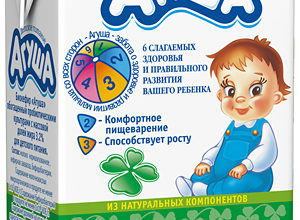

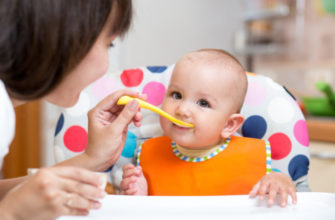

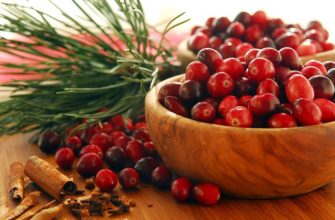
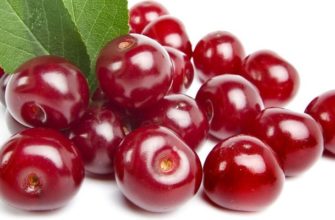
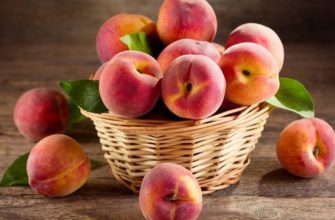
We had a baby up to six months exclusively breast-feeding. Then, when they got their teeth, they started introducing lures. Fine cereal with the addition of oil and salt a little.
At first I gave dairy-free cereals as recommended, but their son ate poorly, then I began to add some of my milk there, more or less I got used to it. And now I already take boxed dairy from the Bibikash series, they are made on the mixture, so they eat it with great pleasure, maybe because they are not so neutral in taste, but because of the mixture are a bit sweet.
Very useful article! I mainly fed my Heinz and Nestle cereals, to taste more pleasant than our domestic ones. I hope the composition too ...
Girls, each one has their own mixture - you never guess, only by experienced, so to speak. I would like an experienced mother advise you to pay attention to the composition on the package - this is the first stage, which is important and which can help quickly find “your” mixture) )) for example, it is important that nucleotides are in the composition - this is for the formation of the immune system. Prebiotics and probiotics are also important - they help the digestive system. Lutein is desirable - he is still responsible for vision, after all. Well, useful elements and vitamins such as iodine, folic acid, iron and so on - I think this is common knowledge. At first, my husband and I could not find such a mixture in which all of the above would be contained - we tried 2 mixtures, none of them suited our crumbs. As a result, finally, through a long search, they found a mixture of Materna - the composition is what you need. We order through baby1care. com. Everything that is useful for growth and development contains, they began to feed our baby - she liked it, no allergic reactions. so we were lucky - and I would recommend this mixture to others, quite calmly.
Stop advertising Materna. The same text everywhere. I relied on advertising. The result is scarlet cheeks and fetid stools. Moreover, palm oil is covered with an advertising feature called betopol oil. Muck is rare. Bottles are not washed from this fuel oil. Than just not rubbed. Again returned to Nutrilak. Without palm trees, rape. The chair does not smell, the child feels well.
The eldest son didn’t want to eat cereals from the boxes at all, but the younger one eats it with pleasure. I take Heinz cereals with fruits for him, it’s useful and tasty at the same time. I had no problems with my tummy and the chair became regular. Mummies will always choose the best for their child.
In children with atopic dermatitis and food allergies in the first year of life, the introduction of milk porridges and cereals from cereals containing gluten is not recommended.
I introduce complementary foods like this - I introduce the product in 4 days, then I submit the day 2. then I introduce a new product. Only at first I introduced three cereals - buckwheat, oatmeal, rice, but it was closer to 6. now the vegetables started. Vegetables are given from 12 to 15.
Try the porridge and Materna mixes ... good .. I tried ... very cool! only the price bites)